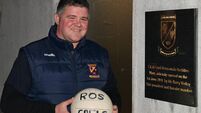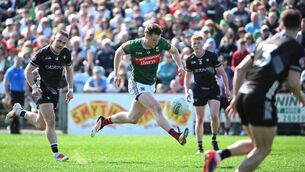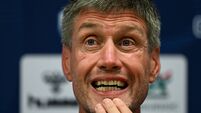Eamonn Fitzmaurice: Semi-final surprises? There may be one…
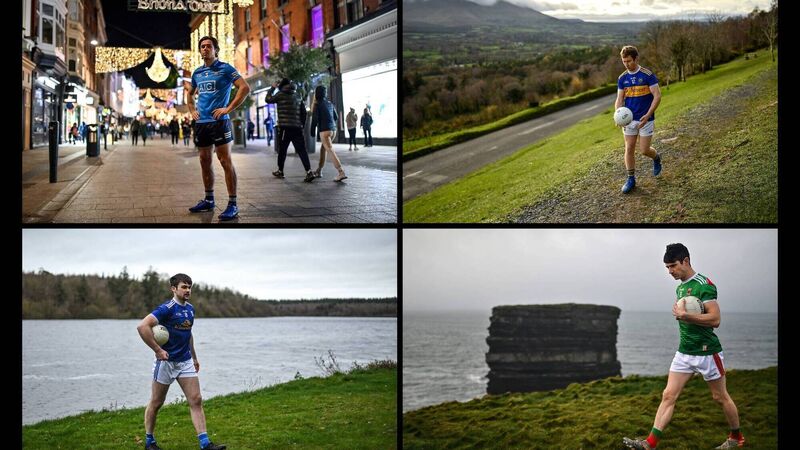
Davy Byrne of Dublin, Conor Loftus of Mayo, Brian Fox of Tipperary and Thomas Galligan of Cavan during the GAA Football All-Ireland Senior Championship Series National Launch. Picture: Sportsfile
We have seen again and again in the Championship how water breaks can be significant momentum killers and swingers. For such an invaluable opportunity to change the shape of a game – notwithstanding the difficulty getting a complete picture watching on television - I have been amazed at the lack of structure that I have seen so far from most teams.
Multiple people talking, players thrown on the ground getting rubs, management collected together in a huddle chatting while the players are left to their own devices, poor body language and no sense of organisation.
Sheep in a heap springs to mind. The only two teams I have seen with a consistent structure are unsurprisingly, Dublin, and the Limerick hurlers. Dublin seem to break into their defensive and offensive units and it is a mix of player and management driven. Limerick use their tactics board as a visual aid when necessary to get their points across.
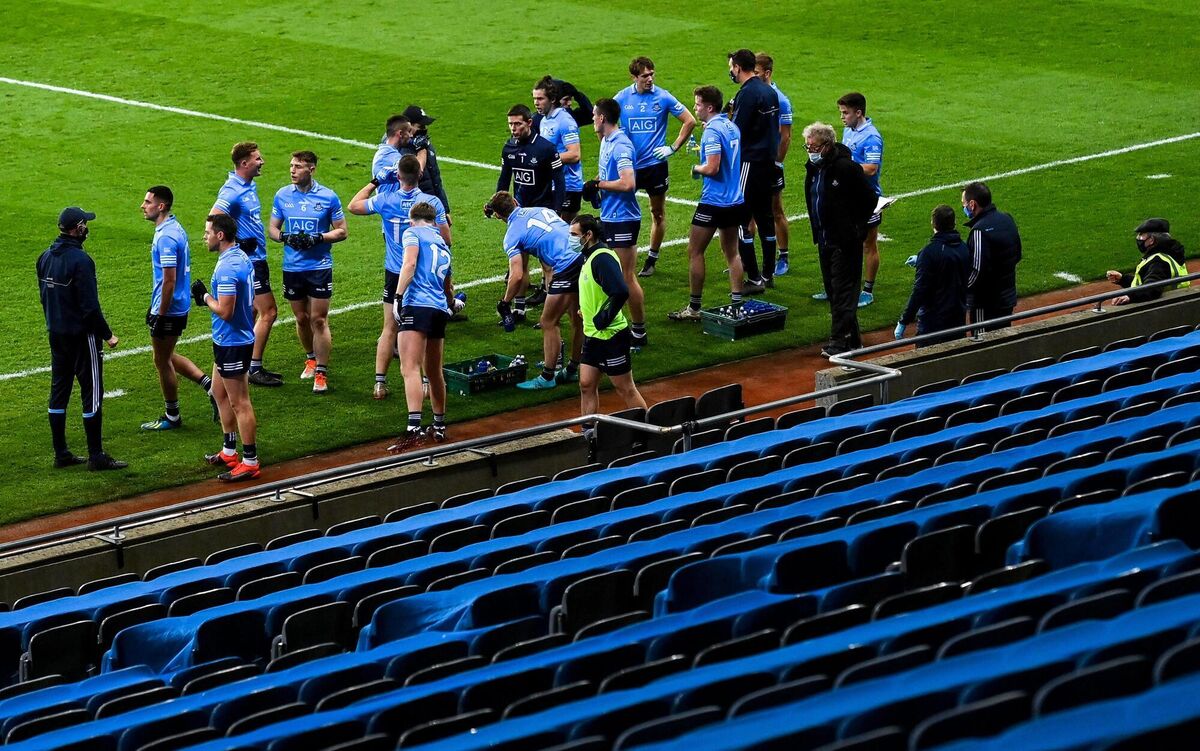
If I was afforded the opportunity of running a water break, I would approach it as follows.
The management would gather shortly before the break to have a brief discussion and agree upon a clear concise point or maximum of two to be shared with the group during the sos uisce. When the referee blows for the water break everyone should move with urgency and form a tight circle to create a sense of unity and purpose.
Yes, it is a chance to rehydrate but more importantly it is a chance to reset.
One person, ideally the most effective communicator would provide the players with the agreed feedback and the actions needed immediately on the resumption of play.
If a player or two needs specific instructions, reminders or a gee-up, a different member of the management goes after each individual and delivers this information - but crucially this comes after the team instructions. Generally, the water breaks happen after a wide or a score and the game resumes on a kickout.
A team should have prepared set plays for this exact scenario. An aggressive press on the opposition kickout to pin them in or an overload at one side on your own kickout to set up a chance of an immediate score and response, for example.
That would be my starting point and I am sure after a few efforts there would be improvements and adjustments to be made to streamline it further.
The fact all teams have had a couple of weeks to organise themselves for this weekend’s All-Ireland semi-finals and tweak their earlier approach, one would expect to see more detail in the time-outs at Croke Park tonight and tomorrow.
This has been a strange year for James Horan. Mayo were relegated to Division 2 but won the Connacht Championship. They are 70 minutes away from an All-Ireland final yet have introduced more quality young blood this year than they have in a long time.
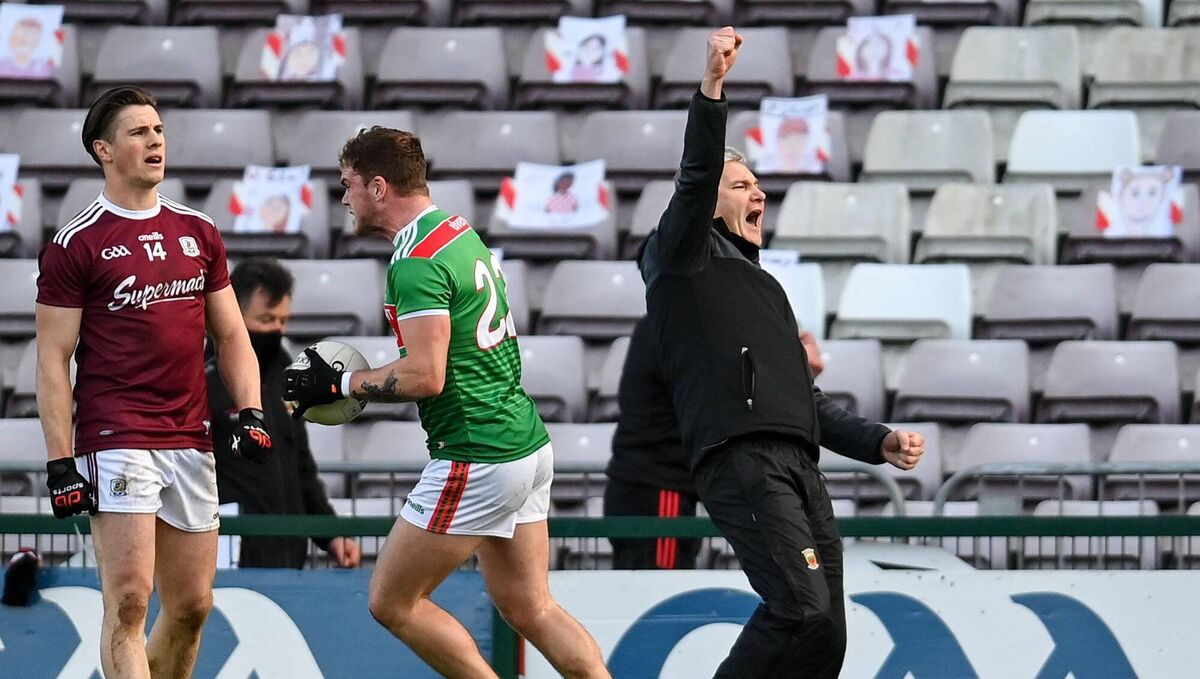
They now have some variety upfront, particularly when Aidan O Shea stays at 14. Oisín Mullin, Eoghan McLaughlin and Tommy Conroy have all been huge additions and they still have some of the old dogs held in reserve to bring in when the going gets tough.
McLaughlin, in particular, brings serious go-forward when they have the ball and is aggressive defensively. There has been much for the Mayo public to be happy about, but they haven’t been ruthless enough in putting teams away when they’re dominating games. This was true in both the Connacht final and against Roscommon.
I would imagine that Horan will have worked on this in the last few weeks when they had an opportunity to get a good block of football in on the training pitch. Their shooting and decision making in the final third will definitely have been targeted.
Ciarán McDonald will have been vocal and active in this and I am expecting more direction and cohesion from them Sunday. If they can solve that particular conundrum they will be formidable.
Tipperary were full value for their Munster final win over Cork, playing a good brand of football with plenty of quality players.
Evan Comerford, Jimmy Feehan, Bill Maher, Kevin Fahey, Robbie Kiely, Liam Casey, Colin O Riordan, Stephen O Brien, Jack Kennedy, Brian Fox, Michael Quinlivan and Conor Sweeney are all experienced campaigners with a good age profile and are right in the middle of what the Americans call a championship window.
This theory contends that all good sports teams have a certain period of opportunity to win silverware before they have to spend some time away from the spotlight and rebuild. A team can maximise their window of opportunity by assembling a core group that hit their peaks together, maximise their potential and hoover up as much silverware as possible before a remodel is required.
That time is now for Tipperary and they are playing with confidence, enabled by David Power and fuelled by their recent run of winning form. They have the tools to cause another ‘upset’, once they can match Mayo’s intensity.
They have a good keeper with an accurate kick out, they are mobile, aggressive and disciplined at the back, are strong in the middle of the field and have that vital mix of workhorse and assassin upfront. They work hard without the ball within a set structure and are effective in the counter-attack.
They have a number of reliable free takers in Sweeney, Kennedy, Quinlivan and Comerford from distance. They may lack a couple of five-star subs that can make the difference, but they are going to take some beating and will realise that opportunities like this for Tipperary footballers are few and far between.
The beauty of sport is that there is always hope for the outsider.
The championship of 2020 has been refreshing in reminding us of that. The romantic in all of us would love to see Cavan tearing into Dublin with the same energy and effect that they did against Donegal and trying to cause another upset. I don’t see it happening though.
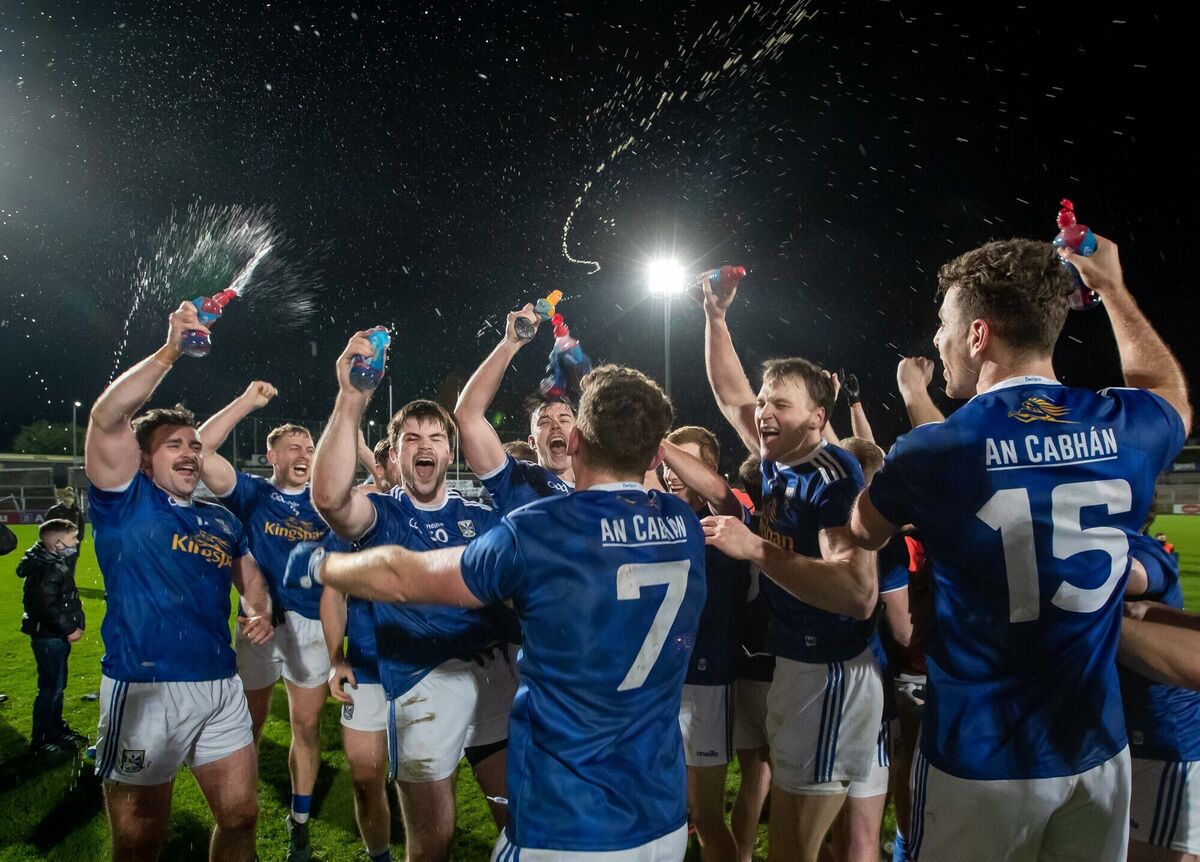
Croke Park is a much bigger pitch and they will find it hard to get hold of Dublin in the first place to be able to tear into them. The champions are forewarned and will appreciate that Cavan have a lot of good players all over the field, have a strong collective spirit and are well-managed.
To illustrate how ruthless Dublin are and how they will approach this match, keep an eye on their approach to Thomas Galligan. He has been outstanding for Cavan so far this season. His fielding and general forceful play has been a throwback and has been so enjoyable to watch.
Towards the end of games, he has won crucial marks that have led to game-winning scores, against Monaghan on the first day out and for the goal against Donegal in the Ulster final. Dublin will have a bull’s eye painted on his back, will target him and will make life a lot harder for him than has been the case thus far.
I expect James McCarthy to pick him up in the middle of the field and possibly John Small or Jonny Cooper closer to goal. They will physically suffocate Galligan every time he goes near the ball, he will be bumped and blocked on his way to contesting kickouts and they will run him when in possession. If he stands up to all that attention his stock will increase even more.
Another area of interest for me today will be the Cavan approach to their kickout. They have been winning matches by going long even if the return in terms of securing possession has been on the low side. They went long with 15 of their 18 kickouts in the Ulster final but only won seven of them.
Crucially they did manage to score 1-3 off them. Those kind of numbers against Dublin will spell disaster though. The champions are excellent at dealing with long opposition kickouts, winning 50% of Meath’s long kickouts last time out.
Generally, they burst the ball back in from the direction it came. As soon as the ball is in the air their forwards spin around and hare out towards the breaks that are often purposely broken in their direction. When Brian Fenton gets a sweep at the ball, he will catch it.
If Cavan want to have any chance of staying with Dublin they have to control their own kickout. Winning breaks may be one part of this strategy, but they will also need a plan B.
There is so much to admire about Dublin from a style and performance perspective every time they play.
Their attacking ethos backed up by impressive skillsets and imperious decision-making means they are often a joy to watch as they stitch together score after score.
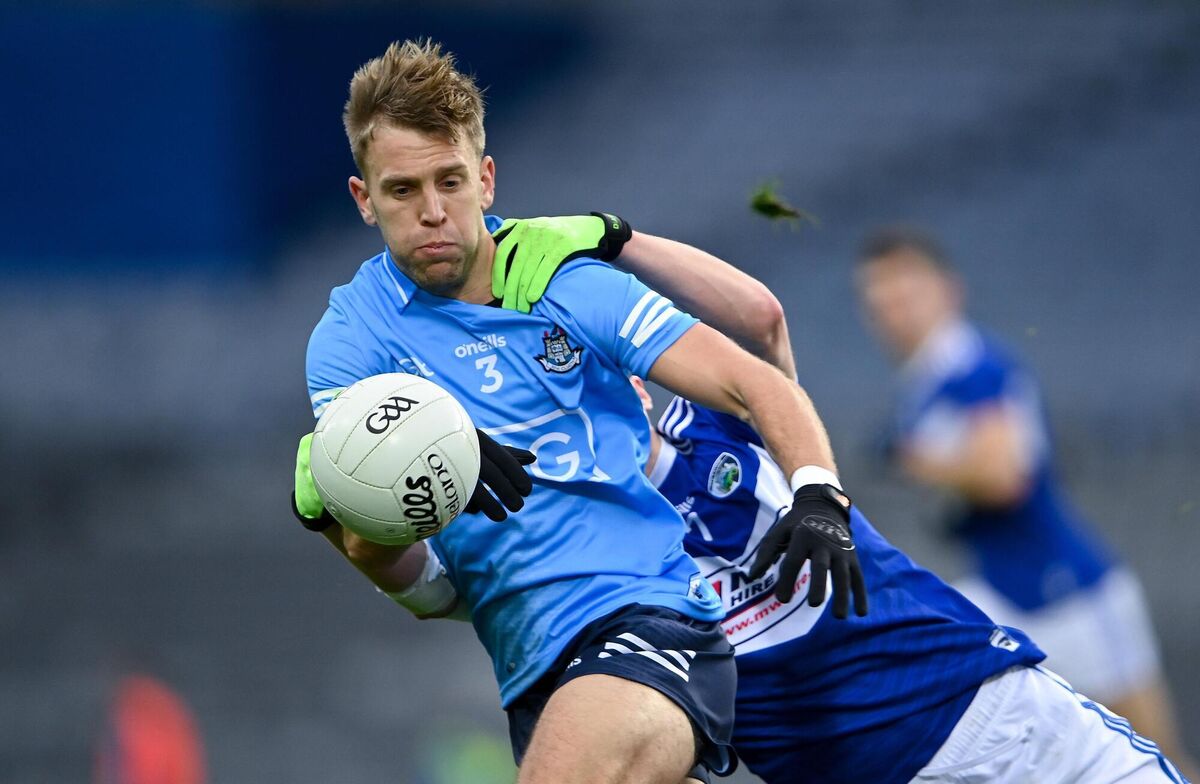
Their work-rate without the ball, the accuracy of their own kickouts and their aggression on the opposition kickout makes it extremely difficult for opposition to get a foothold in the game. Unforced errors are a rarity. When we watch them, we admire the direct style of Con O’Callaghan, the accuracy of Dean Rock and the all-round ability of Ciarán Kilkenny. While their attacking players are central to their success, I believe it is their defensive unit that makes them so difficult to beat. It’s the backs that suck the life out of your challenge.
When preparing a team to play them you always feel that they can be got at, at the back. They play relatively open and there will be plenty of opportunities to attack them, often in one on one situations. However, teams rarely really open them up and every score is hard earned.
They often force the opposition into marginal and rushed shots. They are well organised, but their biggest asset defensively is their ability to defend brilliantly in one-on-one situations in the full back line. The pressure they put on the ball-carrier out the field allows their inside line to play from the front and attack the ball. Jonny Cooper and Michael Fitzsimmons are key in this regard.
When Cooper started out he was far from the finished article. We targeted him with Kerry in the 2013 semi-final with some success, particularly in the first half.
His improvement in the meantime is testament to how hard he works but also how clinically he thinks about defending in general and his own personal game in particular. I heard him interviewed a few times after last year and his attention to detail and obsession with improvement stood out and means he is now one of the first names on the team sheet and is a key leader within the group. If he is missing this evening against Cavan through injury he will be a loss.
To augment these one-on-one defenders they have evolved their sweeper system.
Post 2014, Cian O’Sullivan became a specialist sweeper until teams figured out how to make him redundant by being measured in possession and getting his man on the ball as often as possible. When teams play sweepers against them, they tend to respond by playing one of their own, with the key difference now being that rather than designating one player different players rotate in and out of the role. James McCarthy, Jonny Cooper and even the likes of Ciarán Kilkenny or Brian Howard have excelled in this role recently.
Finally, there is a perception in some quarters that they can be vulnerable to the high ball. And while the odd panic has been caused with aerial deliveries, I have not seen enough evidence for it to be considered a pattern, and, hence, a problem.
Cavan may try this approach and it will be interesting to see if it translates into scores. Their attack illuminates games but it is Dublin’s defence that is the difference.


